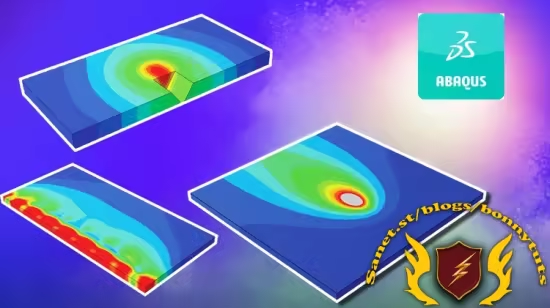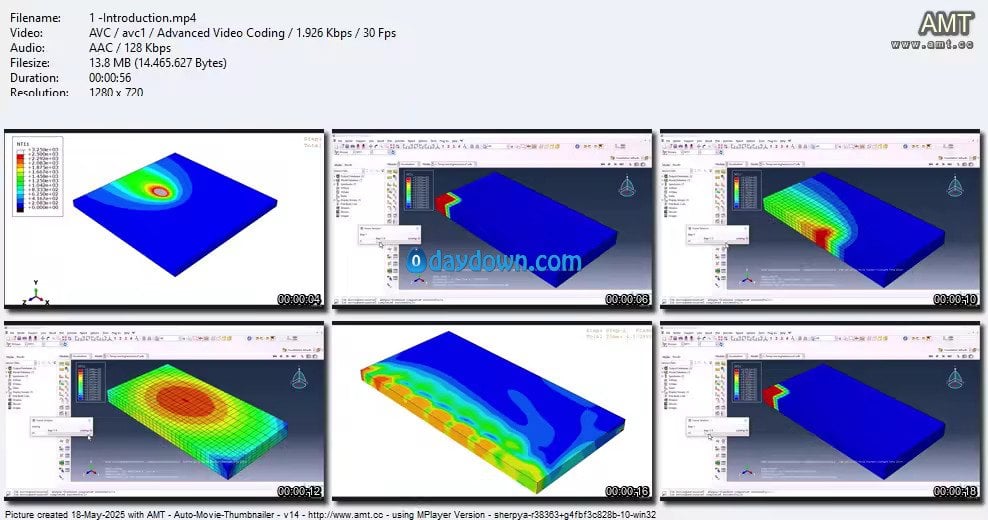
Published 5/2025
Created by FEA MASTER
MP4 | Video: h264, 1280×720 | Audio: AAC, 44.1 KHz, 2 Ch
Level: All | Genre: eLearning | Language: English | Duration: 23 Lectures ( 1h 38m ) | Size: 1.1 GB
Master welding simulation in Abaqus CAE using finite element analysis—start with no-code FEA, end with DFLUX subroutines
What you’ll learn
Simulate welding heat input in Abaqus using moving heat source techniques without any coding or subroutines.
Apply element reactivation in Abaqus to simulate progressive weld bead formation during thermal analysis.
Implement Gaussian and Goldak DFLUX subroutines to model laser and arc welding processes with precision.
Predict and visualize post-welding residual stresses using step-by-step simulation workflows in Abaqus.
Requirements
Basic knowledge of finite element analysis (FEA) is recommended. You’ll need Abaqus CAE installed (student or commercial version). No coding experience required for most sections—subroutines are explained step-by-step.
Description
Looking to simulate welding in Abaqus the right way? Whether you’re a student, researcher, or professional engineer, this course will teach you how to perform advanced finite element welding simulations step by step—starting from a no-code setup and progressing to custom DFLUX subroutines.This is the most complete and structured Abaqus welding simulation masterclass available online. It covers the full workflow, from beginner-friendly heat source modeling to advanced thermal simulations using user subroutines.You’ll start with a clean, code-free model in Abaqus CAE, learning how to simulate a moving heat source without writing any FORTRAN or using complex inputs. Then, you’ll use the element reactivation technique to simulate the stepwise deposition of weld material, just like real welding sequences.After that, you’ll take your skills to the next level with two powerful DFLUX-based methods: Gaussian heat input – ideal for laser welding simulationsGoldak double ellipsoid – widely used in arc welding simulationsYou’ll implement and run these subroutines in Abaqus Standard, with full explanations of every line of code.Finally, the course shows you how to predict and visualize residual stresses after welding using a realistic thermal-mechanical setup. What’s Included:Full model setup in Abaqus CAESubroutine walkthroughs (Gaussian & Goldak)Downloadable input files for each lessonClear explanations of FEA principles, heat transfer, and thermal boundary conditionsHigh-quality voice, visuals, and editing—no filler, no fluff You Will Learn:How to simulate welding in Abaqus using finite element analysis (FEA)How to model moving heat sources without codingHow to use element reactivation for weld progressionHow to write and apply DFLUX subroutinesHow to simulate and analyze residual stresses after weldingHow to structure real-world thermal simulation workflowsWhether you’re preparing a thesis, conducting academic research, or solving real-world welding challenges, this course will give you the tools, confidence, and understanding to do it all—inside Abaqus.All lessons are taught in clear, structured steps, with full support files and workflows you can apply to your own projects immediately.

Password/解压密码www.tbtos.com
转载请注明:0daytown » Abaqus Welding simulation Masterclass: No Code to Subroutine